Mozambique
Discover Mozambique
Mozambique, located in southeastern Africa, is known for its stunning coastline along the Indian Ocean. The country boasts a rich history, diverse culture, and welcoming people. With its vibrant music and dance traditions, it’s a place where rhythm and celebration are ingrained in the fabric of daily life.

Exploring Mozambique means discovering a fusion of Portuguese and African influences, from the architecture to the cuisine. The nation’s natural beauty encompasses lush landscapes, wildlife reserves, and an array of colorful markets, making it a captivating destination for travelers seeking adventure and cultural immersion.
Mozambique’s Flag
The flag of Mozambique was adopted on May 1, 1983. It features a tricolor design of green, black, and yellow, with a red triangle along the hoist side. The green symbolizes the country’s agriculture, the white conveys peace, black represents the African continent, yellow stands for the country’s mineral wealth, and red represents the struggle for independence. At the center of the flag is an emblem of a rifle crossed with a hoe, superimposed on a book. The rifle stands for defense and vigilance, the hoe represents the country’s agriculture, and the open book symbolizes the importance of education. The flag is rich with symbolism, reflecting both the history and aspirations of Mozambique.

In addition to the meanings behind the colors and symbols, the flag of Mozambique is known for its vibrant and eye-catching design, making it one of the most distinctive national flags in Africa. Its bold colors and meaningful symbolism make it an important national symbol, representing the country’s unity, struggle for independence, and hopes for the future.
Mozambique’s flag is proudly displayed at official events, government buildings, and schools, serving as a constant reminder of the country’s rich history and the progress it has made. It evokes a sense of national pride and unity among the people of Mozambique.
The flag of Mozambique is an integral part of the country’s identity and heritage, celebrated and honored by its citizens and cherished as a powerful symbol of national unity and progress.
Mozambique’s Map
Mozambique, a country located on the southeastern coast of Africa, boasts a diverse landscape that includes stunning beaches, lush national parks, and historic sites. The country’s map reflects the intertwining of natural beauty and rich cultural heritage, showcasing the various regions and topographical features that make Mozambique a fascinating destination for travelers.

From the coastal plains to the mountainous interior, the map of Mozambique invites exploration and discovery. The country’s strategic location along the Indian Ocean is clearly depicted, highlighting its significance as a maritime nation with a wealth of coastal treasures.
As visitors navigate the map of Mozambique, they can marvel at the intricate network of rivers, the sprawling urban centers, and the hidden gems waiting to be uncovered. Whether it’s the vibrant streets of Maputo or the rugged terrain of the north, Mozambique’s map offers a glimpse into the country’s enchanting allure.
With its captivating visuals and diverse geographical features, Mozambique’s map serves as a gateway to a world of adventure, culture, and natural splendor waiting to be explored.
Mozambique’s currency
Metical (MZN): The official currency of Mozambique, the metical, is abbreviated as MZN. It is further subdivided into 100 centavos.

Banknotes and coins: The metical banknotes are available in various denominations, including 20, 50, 100, 200, 500, and 1000 meticais. Additionally, coins are in circulation in denominations of 1, 5, 10,
20, and 50 centavos as well as 1, 2, 5, and 10 meticais. Each features unique designs and historical figures.
Exchange rates: The exchange rates against major international currencies fluctuate and are influenced by various economic factors. Visitors are advised to check the current rates before travel.
Mozambique’s Economy
Economic Growth: Mozambique has experienced significant economic growth in recent years, driven by sectors such as energy, agriculture, and infrastructure development.
Natural Resources: The country is rich in natural resources, including coal, natural gas, and minerals, which contribute to its economic development.
Challenges: Despite growth, Mozambique faces challenges such as poverty, inequality, and vulnerability to climate change, requiring sustainable development strategies.
Trade and Investment: Mozambique has been attracting foreign investment, particularly in the energy sector, and has established trade partnerships with various countries.
Mozambican Culture
Traditional Clothing: The traditional clothing of Mozambique often reflects the vibrant and diverse culture of the people. Women may be seen wearing capulana, a brightly colored cloth wrapped around the body, while men often wear colorful shirts and pants made from the same fabric.
Music and Dance: Music and dance are integral parts of Mozambican culture. The traditional music is characterized by rhythmic beats and expressive dances, often accompanied by traditional instruments such as the timbila and marimba.
Culinary Traditions: Mozambican cuisine is a reflection of the country’s diverse cultural influences. Staples like grilled seafood, matapa (cassava leaves in coconut milk), and peri-peri chicken are enjoyed across the country, showcasing the fusion of flavors.
Celebrations and Festivals: Mozambique is known for its vibrant festivals and celebrations, such as the Marrabenta Festival and the Chopelas Festival. These events offer a glimpse into Mozambican traditions and cultural heritage.
Traditional Dances in Mozambique
Makwaya: A traditional fertility dance performed by the Makonde people, characterized by rhythmic movements and vibrant costumes.
Ngodo: A celebratory dance of the Chopi tribe, featuring energetic footwork and synchronized movements to commemorate important events.
Tufo Dance: Originating from the northern region, this dance involves intricate footwork and storytelling through movement, reflecting the cultural heritage of the Makua community.
Mozambican Cuisine
Peri-Peri Chicken: A signature dish in Mozambique, peri-peri chicken is marinated in a spicy blend of peri-peri chili peppers, garlic, and other seasonings. It’s then grilled to perfection, resulting in a flavorful and fiery dish.

Matapa: A traditional Mozambican dish made with cassava leaves, ground peanuts, coconut milk, and flavorful spices. It’s often served with rice and provides a rich and creamy dining experience.

Pãozinho: These warm, buttery rolls are a staple of Mozambican cuisine. They are enjoyed throughout the day and are especially popular at breakfast, often paired with coffee or tea.

Chamussas: These savory pastries are filled with spiced meat, onions, and sometimes potatoes. Chamussas have a delightful crispy exterior and are a beloved snack or appetizer in Mozambique.

Famous Celebrities from Mozambique
Afric Simone
Afric Simone is a renowned Mozambican singer, songwriter, and performer. He gained international fame in the 1970s with his hits like “Ramaya” and “Hafanana”, which topped the charts in several countries.
Afric Simone’s unique blend of African rhythms and catchy melodies made him a beloved figure in the music industry.

Josina Abiathar Muthemba Machel
Josina Abiathar Muthemba Machel is a prominent figure in Mozambique. She was a revered Mozambican politician and activist, known for her contributions to the country’s liberation struggle and her advocacy for women’s rights. Josina Machel’s legacy as a feminist icon and her dedication to social justice continue to inspire many in Mozambique and beyond.

Maria de Lurdes Mutola
Maria de Lurdes Mutola is a track and field athlete from Mozambique who has achieved global recognition for her exceptional talent in middle-distance running. She is a multiple-time world champion and an Olympic gold medalist, inspiring aspiring athletes across the country.
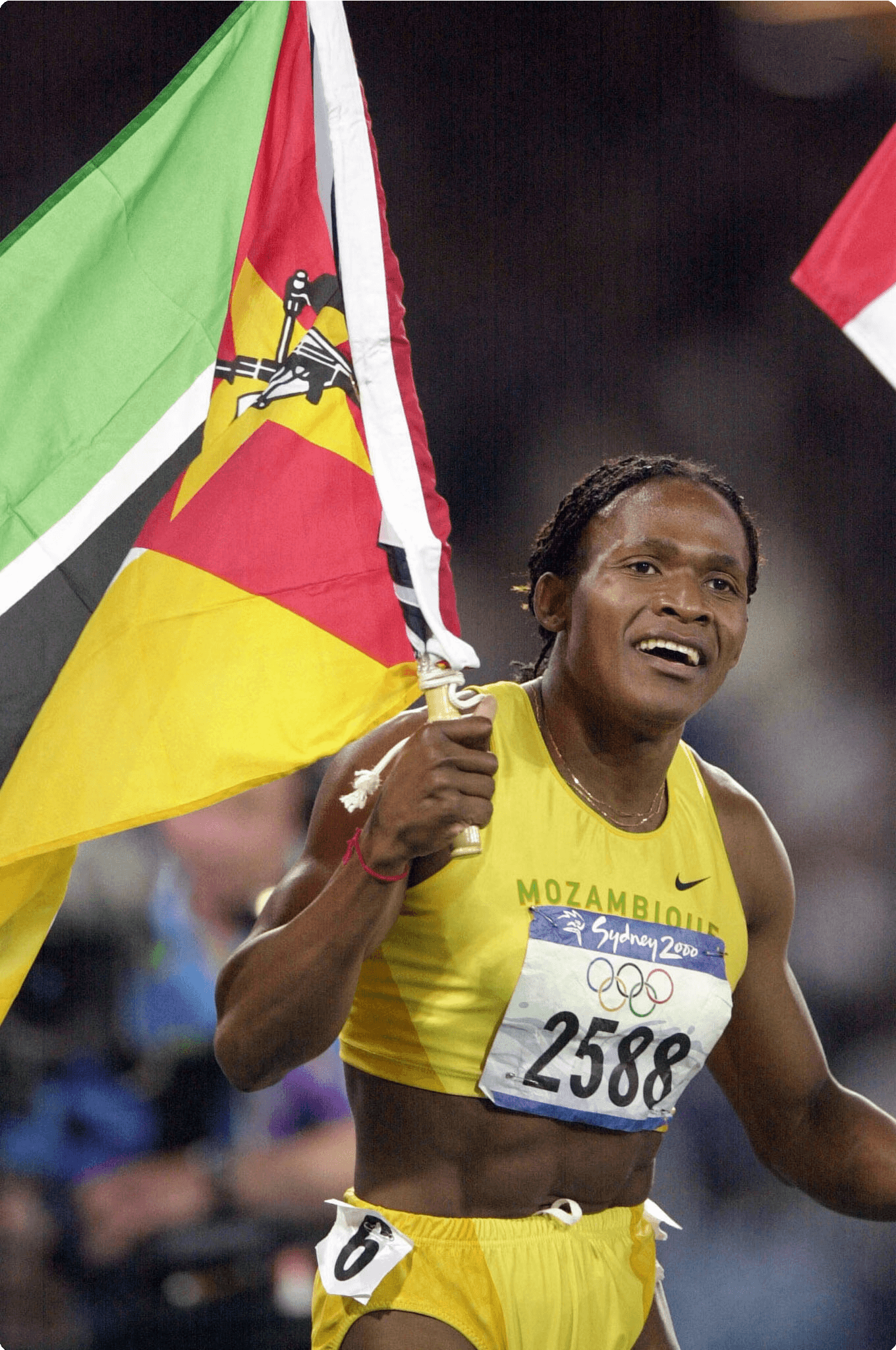
Best cities to visit in Mozambique
Maputo: As the capital and largest city of Mozambique, Maputo offers a vibrant cultural scene, beautiful architecture, and a stunning waterfront. Visitors can explore the lively markets, historic landmarks, and enjoy the blend of Portuguese and African influences in the local cuisine and music.
Matola: Located just southwest of Maputo, Matola is known for its industrial significance and picturesque suburbs. It offers a more relaxed atmosphere compared to the capital, with charming parks, botanical gardens, and opportunities for outdoor activities.
Nampula: Nampula is a city in northern Mozambique known for its bustling markets, ancient mosques, and fascinating historical sites. Visitors can explore the vibrant street life, visit the iconic Nampula Cathedral, and discover the unique cultural heritage of the region.
Beira: Situated on the Indian Ocean coast, Beira is a vibrant port city with a rich history and charming colonial architecture. Visitors can enjoy the stunning beaches, vibrant nightlife, and experience the unique blend of local and international influences in the city’s diverse cuisine and music scene.
Maputo
Maputo, the capital and largest city of Mozambique, is nestled on the shores of the Indian Ocean. It reflects a blend of African, Portuguese, and Arabic influences, making it a vibrant and culturally rich destination. The city boasts a stunning waterfront, lined with palm trees and colonial-era buildings, while its bustling markets showcase local crafts, traditional textiles, and delicious street food.

The city’s art deco architecture, lively music scene, and diverse cuisine contribute to its unique charm. Visitors can explore historical sites such as the Fort of Maputo and the Natural History Museum, offering insight into the country’s past. Beach enthusiasts are drawn to the pristine shores of nearby Catembe, and the city’s vibrant nightlife is not to be missed.
Maputo’s welcoming atmosphere, warm climate, and rich cultural offerings make it a must-visit destination, with an array of dining, accommodation, and entertainment options to cater to every traveler’s preferences.
For a visual representation of Maputo, check out this stunning cityscape photo capturing the essence of this dynamic city.
Matola
Matola is the second most populous city in Mozambique, located just southwest of the capital, Maputo. It is a major industrial and manufacturing center, playing a significant role in the country’s economy. The city is known for its bustling markets, vibrant cultural scene, and diverse architecture, reflecting both colonial and contemporary influences.
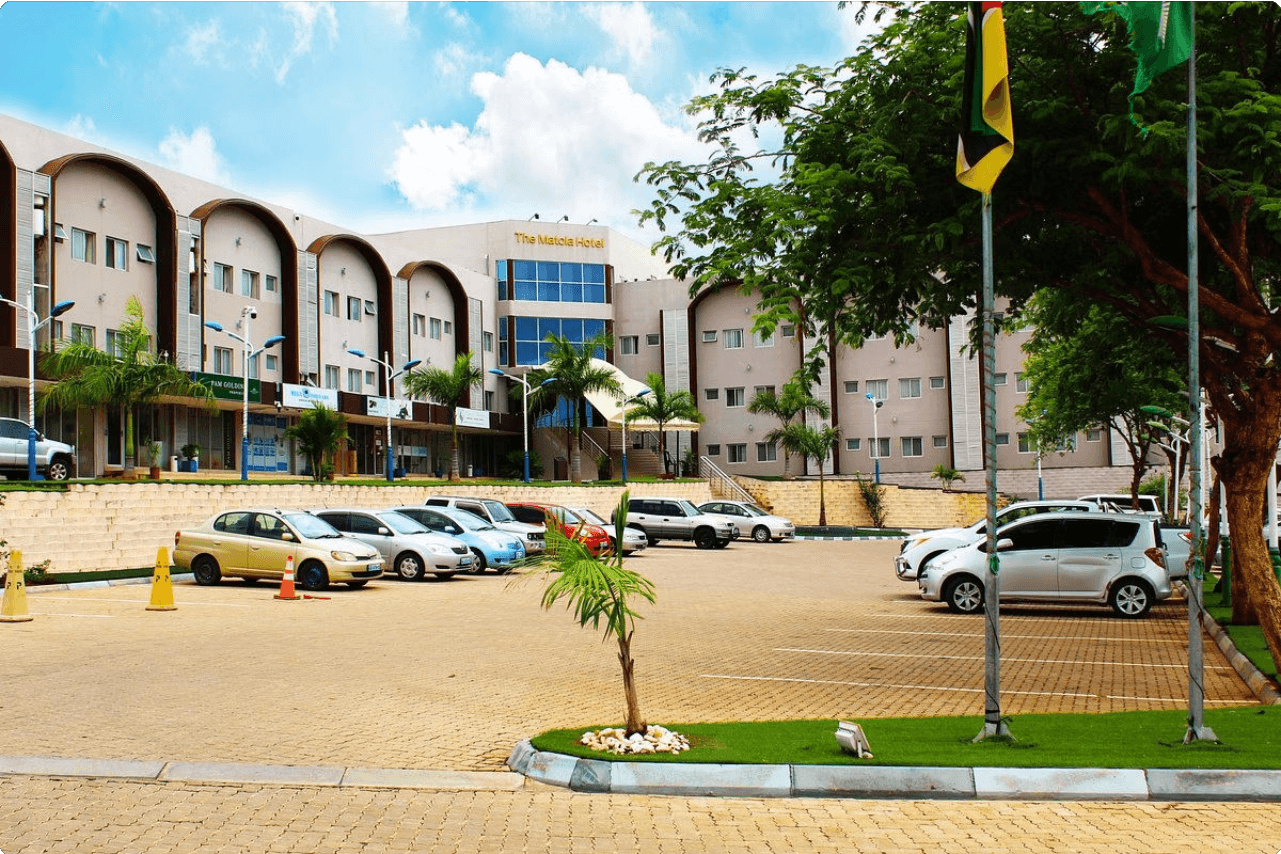
With its proximity to Maputo and the beautiful Indian Ocean coastline, Matola offers a blend of urban conveniences and natural beauty. Visitors can explore the local markets, enjoy traditional Mozambican cuisine, and immerse themselves in the rich cultural heritage of the region. Matola’s close proximity to Maputo also makes it a convenient base for exploring the surrounding areas and experiencing the best of southern Mozambique.
Nampula
Nampula is the third largest city and the capital of the Nampula Province in northern Mozambique. It is a city known for its lively markets, vibrant cultural scene, and rich history. Visitors to Nampula can explore the bustling markets, where they can find an array of authentic local crafts, fresh produce, and unique souvenirs. The city is also home to several historical landmarks, including the Nampula Fort, which offers panoramic views of the city and surrounding landscapes.
Additionally, Nampula is a hub for traditional music and dance, providing opportunities for travelers to immerse themselves in the vibrant cultural traditions of Mozambique. The city’s diverse culinary scene offers a range of traditional dishes, reflecting the region’s fusion of flavors and influences.

Surrounding Nampula, visitors can discover natural wonders, including picturesque landscapes, lush greenery, and breathtaking natural attractions. The region is also known for its hospitable locals, offering a warm welcome to travelers from around the world.
Overall, Nampula is a fascinating destination that combines rich cultural experiences, historical significance, and natural beauty, making it a must-visit city in Mozambique.
Beira
Beira is the second largest city in Mozambique and is known for its vibrant culture and rich history. Located on the Indian Ocean, Beira boasts stunning beaches and waterfront areas, making it a popular destination for both locals and tourists alike. The city is a melting pot of cultures, with influences from Portuguese, African, and Arab traditions, creating a unique and diverse atmosphere.
The architecture in Beira showcases a blend of colonial-era buildings and modern infrastructure, providing visitors with a fascinating juxtaposition of the city’s past and present. The city’s bustling markets, including the iconic Central Market, offer a glimpse into daily life in Beira, where visitors can find an array of locally crafted goods and fresh produce.
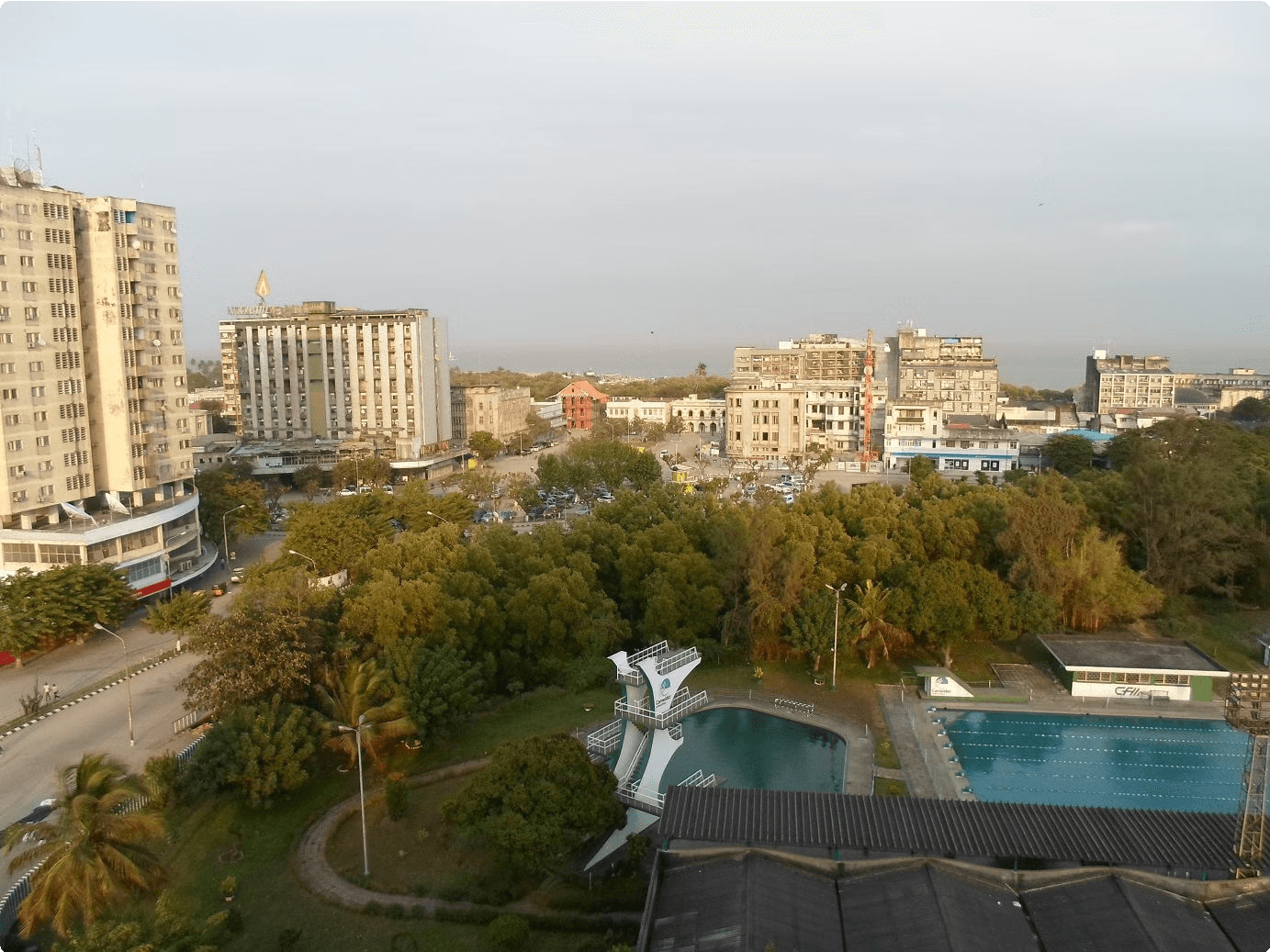
Beira is also a hub for maritime trade, with a busy port that supports the region’s import and export activities. The city’s strategic location has contributed to its significance as an economic center, attracting business and investment opportunities.
Visitors to Beira can explore the diverse culinary scene, enjoy vibrant music and dance performances, and immerse themselves in the warmth of the local community. With its historical landmarks, natural beauty, and welcoming atmosphere, Beira is a compelling destination for those seeking an authentic Mozambican experience.
Top Tourist Attractions in Mozambique
Gorongosa National Park: Located in the heart of Mozambique, this park is known for its diverse wildlife, beautiful landscapes, and opportunities for safari experiences.
Quirimbas Archipelago: A stunning collection of 32 islands, offering idyllic beaches, coral reefs for snorkeling, and luxury resorts for a relaxing getaway.
Island of Mozambique: A UNESCO World Heritage Site, showcasing Portuguese colonial architecture, vibrant markets, and a rich history to discover.
Tofo Beach: Renowned for its pristine beaches, crystal-clear waters, and the chance to swim with whale sharks and manta rays, making it a paradise for beach lovers and marine enthusiasts.
Beaches in Mozambique
Mozambique is renowned for its stunning beaches, offering a perfect blend of serene coastlines and vibrant marine life. The country boasts a diverse range of beaches, from secluded and unspoiled stretches of sand to lively spots with beachside amenities.
Visitors can immerse themselves in the crystal-clear waters while enjoying activities such as snorkeling, diving, and water sports. The sandy shores provide an ideal setting for relaxation, sunbathing, and witnessing breathtaking sunsets over the Indian Ocean.

Whether you’re seeking a tranquil escape or an adventure-filled beach getaway, Mozambique’s coastline has something to offer for every traveler’s taste and preference. From the pristine Bazaruto Archipelago to the bustling beaches of Ponta do Ouro, Mozambique’s coastal gems are a true paradise for beach enthusiasts.
For a truly unforgettable experience, don’t miss the opportunity to explore the vibrant underwater world through guided diving expeditions or simply unwind on the soft sands while indulging in the warm tropical climate.
Explore the charm of Mozambique’s beaches, where natural beauty and relaxation converge to create an idyllic coastal escape.
When visiting Mozambique, set aside time to discover these coastal treasures, where the allure of the ocean meets the warmth of the sun, offering a captivating experience that lingers in the memory long after departure.
From the golden beaches of Inhambane to the rugged cliffs of Pemba, each beach in Mozambique tells a unique story and invites travelers to embrace the enchanting essence of the country’s coastal allure.
National Parks in Mozambique
Mozambique is home to a diverse range of national parks, each offering unique ecosystems and wildlife experiences. Gorongosa National Park, located in the heart of the country, is renowned for its rich biodiversity and successful conservation efforts. Visitors to Gorongosa can witness the stunning landscapes of the Great Rift Valley and encounter elephants, lions, and numerous bird species.
Zinave National Park, situated in a vast wilderness area, provides a sanctuary for endangered species such as the African wild dog and reedbuck. The park’s tranquil setting and open plains make it an ideal destination for nature enthusiasts and photographers. Niassa National Reserve, one of the largest conservation areas in Africa, boasts expansive savannahs and ancient baobab trees where buffalo, sable antelope, and wild dogs roam freely.
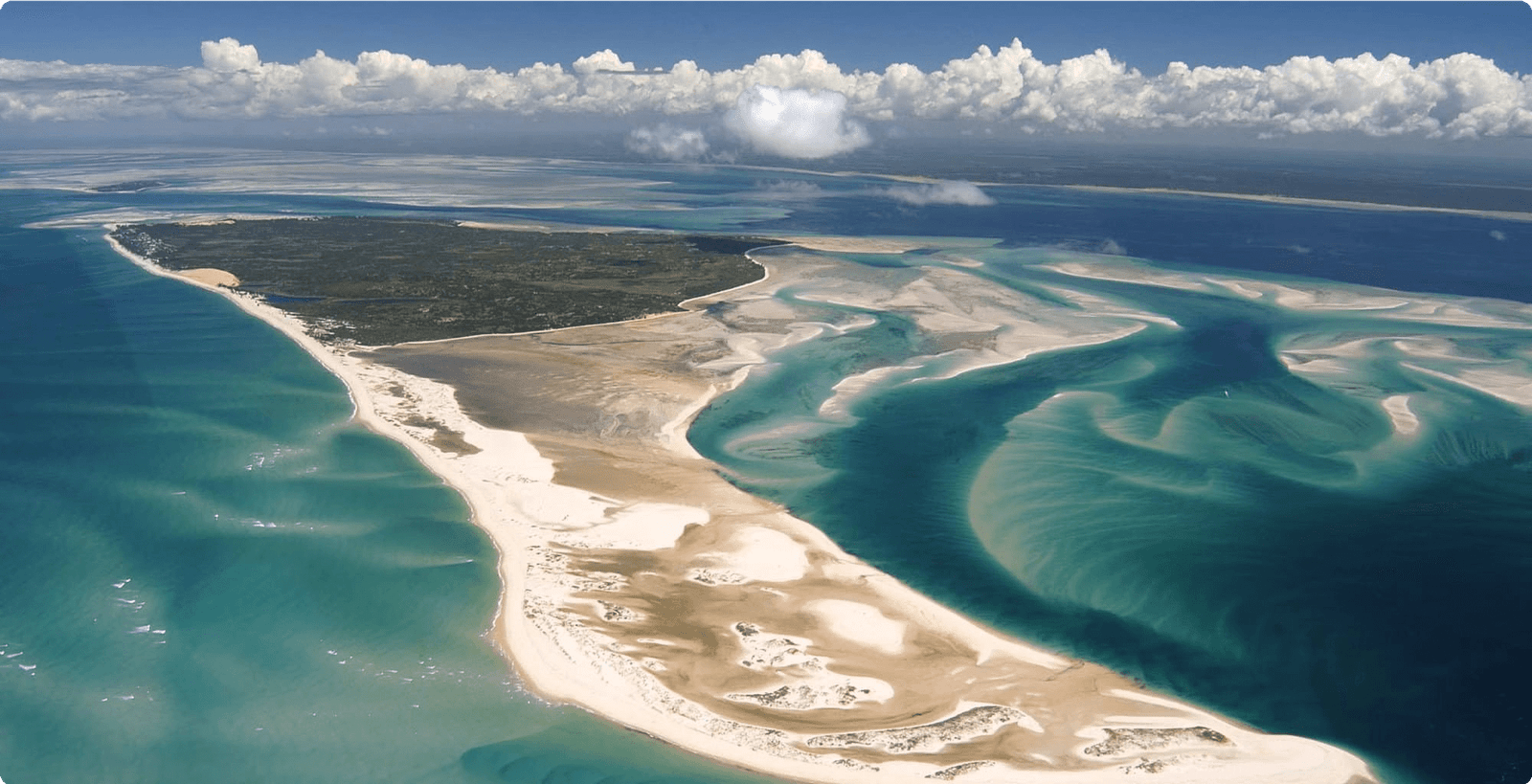
The national parks of Mozambique offer immersive safari experiences, opportunities for birdwatching, and a chance to contribute to wildlife conservation efforts. Exploring these protected areas provides a deeper understanding of Mozambique’s natural heritage and the importance of preserving its ecosystems for future generations.
Explore the National Parks in Mozambique to witness the untamed beauty of the African wilderness and connect with nature in its purest form.
Historical Sites in Mozambique
Mozambique is rich in history, and its historical sites offer a glimpse into the diverse and fascinating past of the country. One of the most notable historical sites is the Island of Mozambique, a UNESCO World Heritage Site. This island served as the capital of Portuguese East Africa for nearly four centuries, and its well-preserved architecture reflects the colonial influence. The Fort of São Sebastião, built in the 16th century, stands as a symbol of the Portuguese presence. Visitors can explore the fort and learn about its strategic importance during the colonial era.
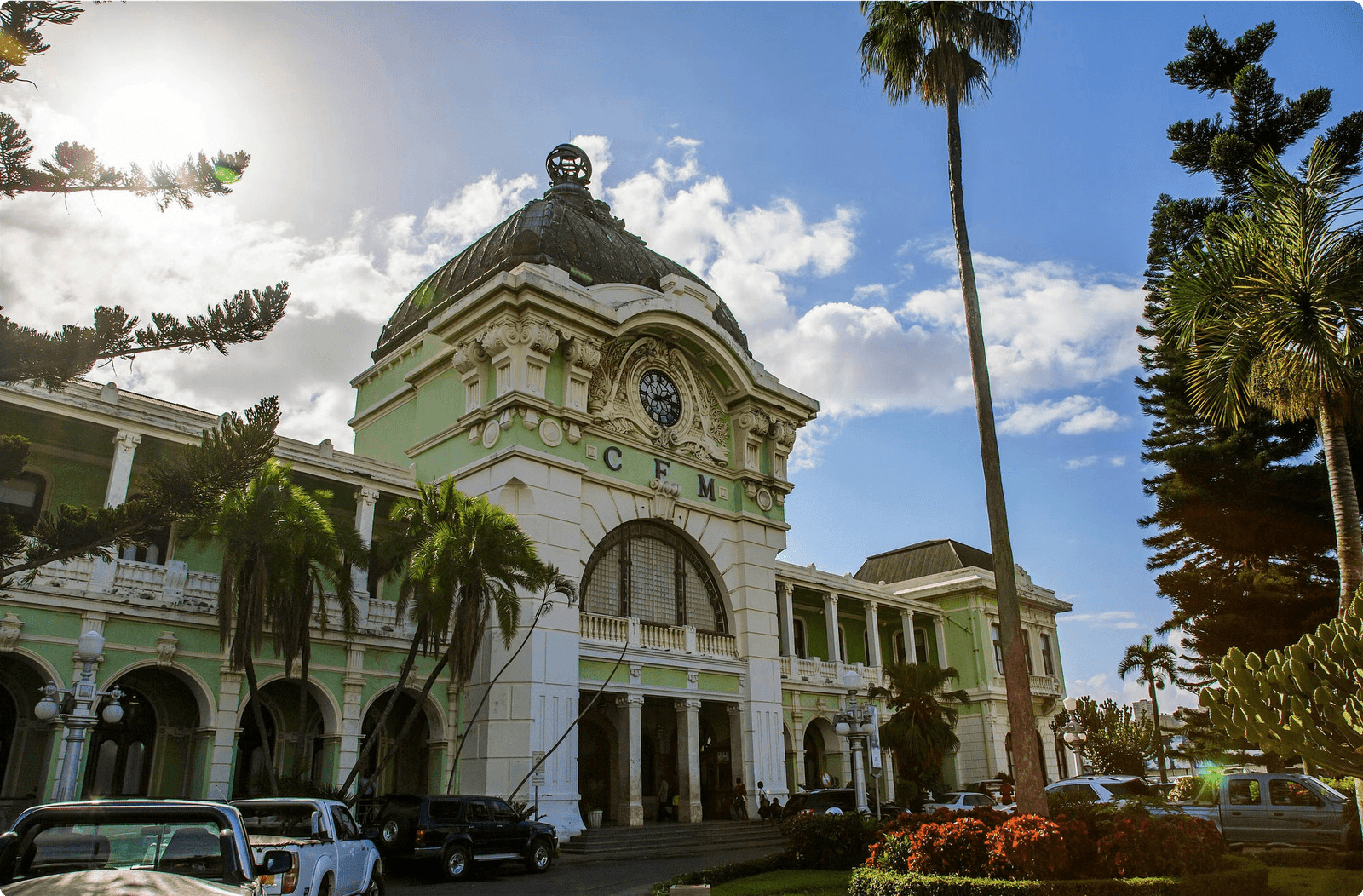
Another significant historical site is the Great Zimbabwe Ruins, located near the border with Zimbabwe. These ruins are evidence of an ancient civilization that thrived in the region, showcasing intricate stone structures and artifacts. The ruins also provide insights into the trade networks and architectural prowess of the ancient inhabitants.
Furthermore, the Igreja de Santo António in Pemba is a captivating historical site, representing the fusion of European and African architectural styles. This church, constructed in the 17th century, showcases the cultural exchange between the Portuguese settlers and the local population. Its ornate design and historical significance make it a must-visit for history enthusiasts.
While these sites represent just a fraction of Mozambique’s rich history, they offer an immersive experience for visitors eager to uncover the country’s past.
Museums in Mozambique
Mozambique is home to a rich and diverse cultural heritage, and its museums serve as valuable repositories of the country’s history and artistic traditions. The National Art Museum in Maputo is a prominent institution showcasing a wide range of contemporary and traditional art, including sculptures, paintings, and artifacts that provide insights into Mozambique’s cultural evolution.
Another significant museum is the Museum of the Revolution, which offers a comprehensive look at the country’s struggle for independence and the subsequent period of social and political transformation.
Visitors can explore historical documents, photographs, and artifacts that depict the nation’s fight for freedom and the journey towards self-governance.

The Ethnographic Museum in Nampula is dedicated to preserving and celebrating the indigenous heritage of Mozambique, displaying traditional crafts, ceremonial objects, and cultural relics that offer a glimpse into the daily lives and belief systems of diverse ethnic groups across the country. Additionally, the Natural History Museum in Beira showcases the rich biodiversity of Mozambique through exhibits featuring geological specimens, taxidermy, and interactive displays on local flora and fauna.
Festivals and Events in Mozambique
Marrabenta Festival: This annual music festival celebrates the traditional Mozambican music genre, Marrabenta. It features live performances, dance shows, and local artists showcasing their talent.

Vilankulo Coastal Music Festival: Held in the coastal town of Vilankulo, this festival brings together music enthusiasts to enjoy a mix of traditional and contemporary music against the backdrop of the stunning beach.
Feira do Livro (Book Fair): Literature lovers gather at this event to explore Mozambican literature, meet authors, and engage in book discussions. It’s a vibrant celebration of the country’s literary heritage.
Mapiko Festival: A cultural extravaganza featuring vibrant performances of the Mapiko dance, a traditional masked dance form unique to Mozambique. The festival showcases the rich cultural heritage of the region.
Traditional Crafts in Mozambique
Mozambique is renowned for its rich cultural heritage, which is showcased through its traditional crafts. One of the most iconic crafts is the vibrant and intricately designed capulana fabric. This colorful fabric is used for clothing, home decor, and various accessories. Skilled artisans also craft beautiful woodcarvings, including masks, sculptures, and intricate furniture, reflecting the country’s diverse cultural influences.
The art of pottery is another integral part of Mozambican craftsmanship, with artists creating stunning clay pottery using traditional techniques that have been passed down through generations. The country also boasts exquisite beadwork, with artisans incorporating colorful beads into jewelry and decorative items, often inspired by the natural beauty and wildlife of Mozambique.
Visitors to Mozambique can explore bustling markets and artisan villages to admire and purchase these exceptional crafts, gaining insight into the creativity and talent of the local artisans. Supporting these traditional crafts not only preserves Mozambique’s cultural identity but also provides valuable support to the talented craftsmen and women who continue to uphold these time-honored traditions.
Wildlife in Mozambique
Mozambique is home to a diverse array of wildlife, making it a paradise for nature enthusiasts. The country’s national parks and reserves are teeming with unique and fascinating species, including elephants, lions, leopards, buffalo, and rhinoceros. The Niassa Reserve in northern Mozambique is particularly renowned for its large populations of wildlife, providing opportunities for incredible safari experiences.
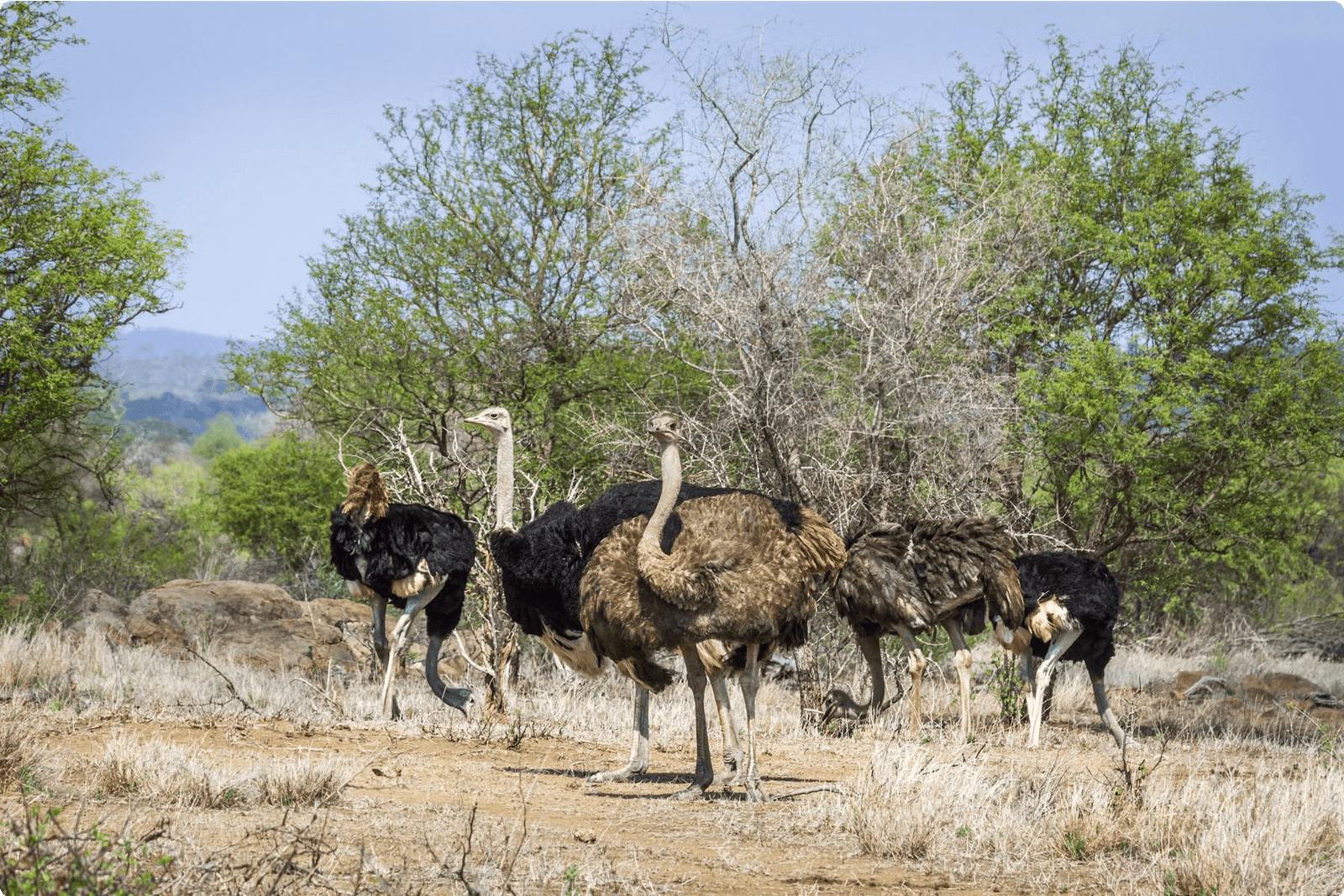
The coastal areas of Mozambique also offer the chance to spot marine life, such as dolphins, whales, and dugongs. The country’s extensive coastline and pristine marine ecosystems make it a hotspot for marine biodiversity.
For birdwatchers, Mozambique boasts an impressive avian population, with over 600 bird species recorded within its borders. The diverse habitats, from wetlands to woodlands, provide a rich tapestry of birdlife, attracting birding enthusiasts from around the world.
Sports in Mozambique
Basketball: Basketball is a popular sport in Mozambique, with a growing number of youth leagues and local tournaments. The country has talented basketball players who participate in international competitions.
Football (Soccer): Football is the most popular sport in Mozambique, with a strong national league and passionate fan base. The country has produced several talented footballers who have competed in top international leagues.
Beach Volleyball: With its stunning coastline, Mozambique offers excellent opportunities for beach volleyball enthusiasts. Tournaments and friendly matches are frequently held along the beautiful beaches.
Running and Athletics: Mozambique has a rich history in long-distance running and athletics, with many athletes excelling in events such as marathons and track competitions.
Music in Mozambique
Marrabenta: This is one of the most popular music genres in Mozambique, characterized by its infectious rhythms and lively dance moves. Originating in the 1930s, Marrabenta has evolved over the years and continues to be a vibrant part of Mozambican music culture.

M’batuku: Originating from the southern region of Mozambique, M’batuku is a traditional music style that is often accompanied by energetic dance performances. The music is created using a combination of vocals, drums, and other traditional instruments, creating a unique and captivating sound.
Timbila: Timbila music is deeply rooted in the culture of the Chopi people in Mozambique. It features the timbila xylophone, a traditional instrument made from carefully crafted wooden keys. The rhythmic melodies and harmonies of Timbila music reflect the rich heritage of the Chopi community.
Languages Spoken in Mozambique
Portuguese: Being the official language of Mozambique, Portuguese is widely spoken and used for administrative, educational, and legal purposes.
Emakhuwa: This is the most widely spoken indigenous language in Mozambique, primarily in the northern regions of the country.
Xichangana: Commonly spoken in the southern provinces of Mozambique, Xichangana is an important Bantu language with regional significance.
Other Indigenous Languages: Mozambique is home to a diverse range of indigenous languages such as Elomwe, Echuwabo, and Emakwa, each with its own unique dialects and cultural significance.
Climate in Mozambique
Mozambique has a tropical climate along the coast, making it hot and humid with temperatures averaging between 77°F (25°C) and 86°F (30°C). The northern part experiences heavy rainfall, while the southern region is drier. The central area is prone to cyclones during the rainy season. The dry season, from May to October, offers pleasant weather, making it an ideal time to visit. The coastal areas enjoy cooling sea breezes, providing relief from the heat.
During the rainy season, the country’s interior becomes lush and green, attracting nature enthusiasts. The diverse climate zones make Mozambique a haven for a wide variety of wildlife, from marine species along the coast to unique flora and fauna further inland. Travelers can also enjoy water activities, as the warm Indian Ocean waters entice visitors year-round.
The country’s climate offers something for everyone, whether it’s enjoying the warmth of the coast or the diverse landscapes inland. With its unique climate and varying weather patterns, Mozambique promises an unforgettable experience for all who visit.
Transportation in Mozambique
Roads: Mozambique has an extensive road network, but many roads are in need of repair. The major highways are usually paved, but secondary roads are often unpaved and can become impassable during the rainy season.
Public Transport: The most common form of public transportation in Mozambique is the “chapa,” which is a minibus or shared taxi. They are affordable and operate on fixed routes, making them convenient for short distance travel.
Railway: The railway system in Mozambique is an important mode of transportation for freight and passengers. The network connects major cities and ports, offering an alternative to road transport for long distances.
Accommodation options in Mozambique
Luxury Resorts: Mozambique offers a range of luxurious beachfront resorts that provide an
indulgent escape for travelers seeking ultimate relaxation. These resorts boast world-class amenities, private villas, and stunning ocean views, ensuring a truly opulent experience.
Eco-Lodges: For the environmentally-conscious traveler, Mozambique’s eco-lodges offer a sustainable and immersive stay in the country’s natural surroundings. Visitors can enjoy eco-friendly accommodations while contributing to conservation efforts and experiencing the rich biodiversity of Mozambique.
Beach Bungalows: Experience the quaint charm of Mozambique’s coastal areas by staying in charming beach bungalows. These accommodations provide a cozy and authentic beach retreat, allowing guests to unwind in a laid-back atmosphere with easy access to pristine beaches and crystal-clear waters.
Travel Tips for Visiting Mozambique
Weather: Mozambique experiences a tropical climate with distinct wet and dry seasons. The best time to visit is during the dry season from May to October when the weather is more comfortable for sightseeing and outdoor activities.
Health Precautions: It’s important to take precautions against malaria by using mosquito repellent and taking antimalarial medication. Additionally, travelers should ensure they are up to date with routine vaccinations including hepatitis A and typhoid.
Cultural Etiquette: When visiting Mozambique, it’s important to respect local customs and traditions. The people of Mozambique are warm and welcoming, and it’s customary to greet others with a handshake and a smile.
Beach Safety: For beach lovers, it’s essential to be mindful of strong ocean currents. Visitors should swim only in designated safe areas and pay attention to any warning flags on the beaches.
Visa and Documentation: Travelers to Mozambique should ensure they have a valid passport and obtain the necessary visa before arrival. Additionally, it’s advisable to carry copies of important documents and have travel insurance for peace of mind.
Conclusion
As you conclude your virtual tour of Mozambique, it’s evident that the country offers diverse experiences for every traveler. From luxurious beach resorts to eco-friendly lodges and charming beach bungalows, Mozambique caters to a wide range of preferences. The country’s natural beauty, vibrant culture, and warm hospitality make it a must-visit destination.
